Our coastal sand dunes are important as they protect our land and buildings from wave energy, erosion, and flooding. They also protect inland habitats and buildings from salt spray and are an important habitat for many plants and animals. Plants are a key component to coastal sand dunes. The leaves of dune plants capture wind-blown sand, helping the dunes grow taller. The deep roots of dune plants then act as a network to hold the sand in place, stabilizing our sand dunes.
It takes special types of plants to survive the harsh conditions of sand dunes. They must be able to tolerate salt spray, high temperatures, and low soil moisture. Sea oats are one of the most important dune plants, but our dunes are comprised of many species including railroad vine, panic grass, and saw palmettos. Keep reading to learn about ten important species that make up our sand dunes in coastal Florida!
-
Sea oats
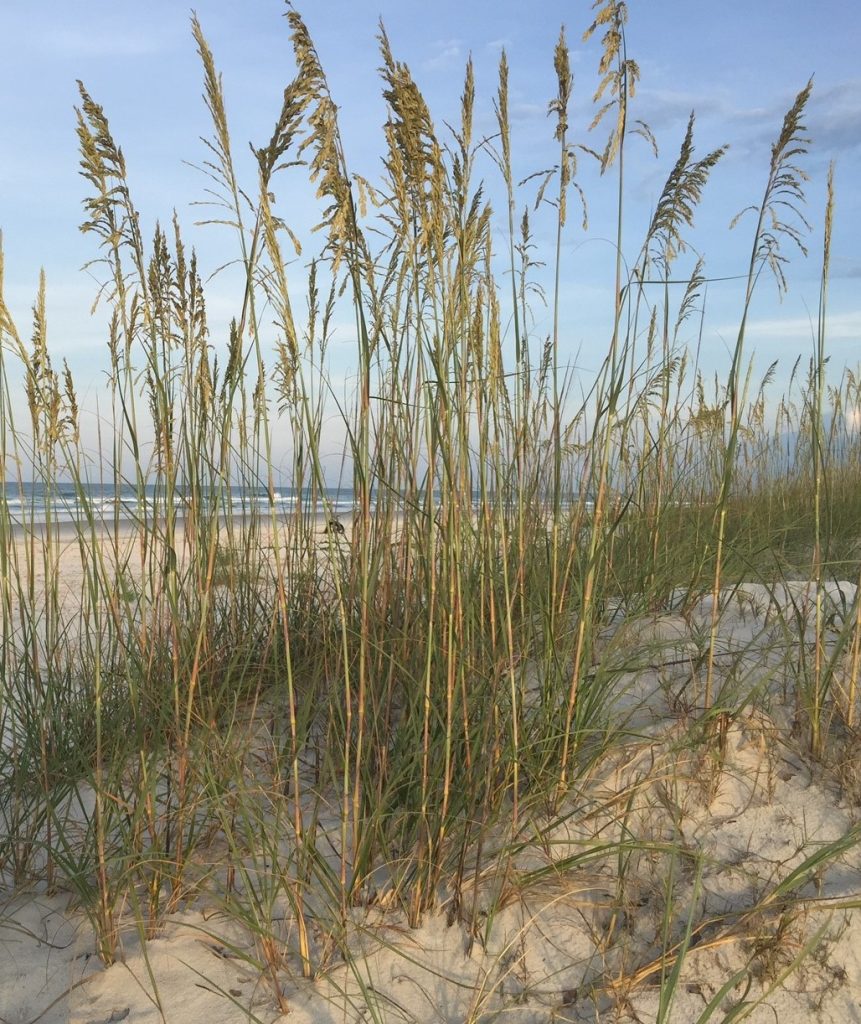
Sea oats (Uniola paniculata) are one of the most important and well-known dune plants in Florida. They assist with the stabilization and growth of our dunes as the tall leaves trap wind-blown sand and the deep roots and rhizomes stabilize them. The leaf portion of the grasses grows to about 1-2 feet tall, but the central stem with the inflorescence of sea oats can stand at 5 to 8 feet. The seeds turn a golden brown in the summer and are an important food source for wildlife in the dunes, including beach mice. Sea oats are protected by law in Florida, and you cannot collect plants or seeds from plants on public beaches.
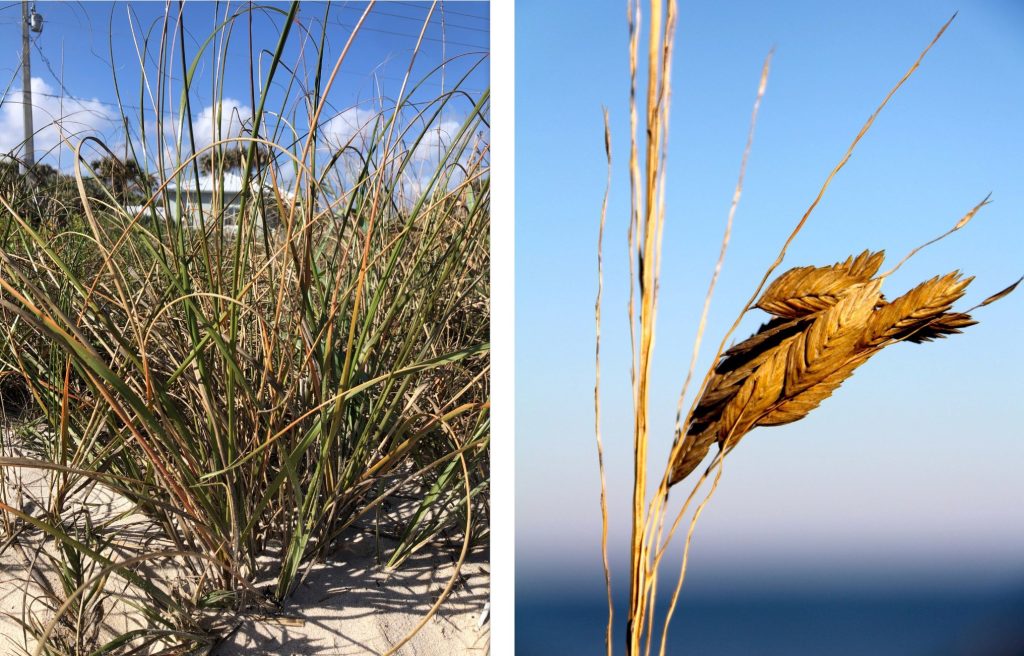
-
Bitter panic grass

Although it doesn’t get as much recognition as sea oats, bitter panicgrass or bitter panicum (Panicum amarum) is an extremely important plant for dune stabilization that can often be found mixed in with sea oats. It can grow quickly and may be especially useful in dunes that are getting established after disturbance or areas that are replanted. This grass has a thick stem with leaves branching off the length of the stem, which assists in capturing wind-blown sand and building our dunes.
-
Sea grapes
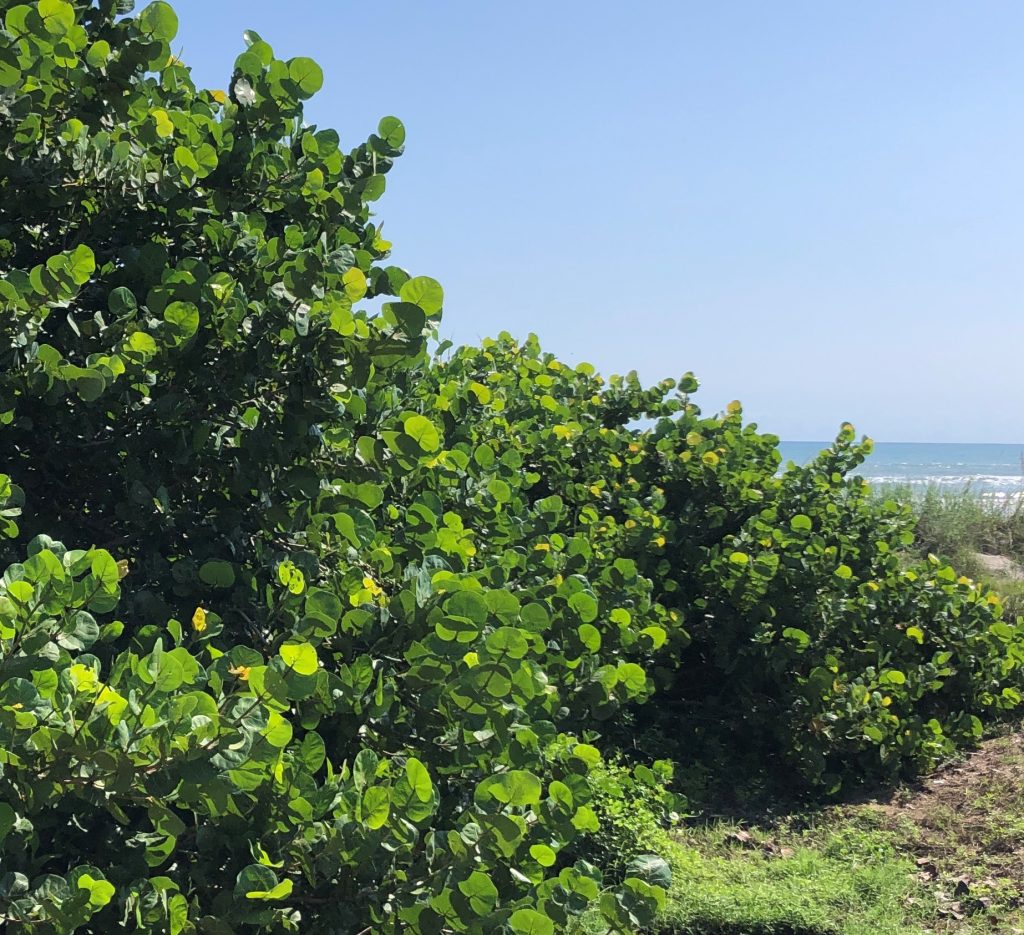
Sea grape (Coccoloba uvifera) trees are found on sand dunes as well as used frequently in landscaping. They are a tropical species that does not tolerate freezing, so they are primarily found in south Florida and are less common as you head north. Sea grapes have large round leaves, and the female trees produce a green grape that is eaten by birds and other wildlife. The trees can reach heights of 35-50 feet and can protect the land behind them from salt spray. They also prevent light pollution from reaching the beaches, which is important for sea turtle nesting areas.
-
Saw palmetto

The saw palmetto (Serenoa repens) is synonymous with Florida, being found in every county in the state, from the dunes to inland forests. It is highly salt tolerant, and as a larger and denser plant than many of the grasses, it can protect the plants landward of it from salt spray (especially up north where we don’t have many sea grapes.) The stems of this plant have a saw-tooth ridge, which gives them their name and is a good reason to give them plenty of space! The berries of the saw palmetto are an important food source for many birds and mammals.
-
Railroad vine

Railroad vine (Ipomea pes-capre) is a creeping vine that runs along the sand. Part of its scientific name “pes-capre” means goat hoof, named as such because the green leaves have two lobes and resemble their namesake! They have beautiful purple flowers. Railroad vine is a colonizing species that moves in after disturbances, such as storms, and helps with beach stabilization.
-
Beach morning glory
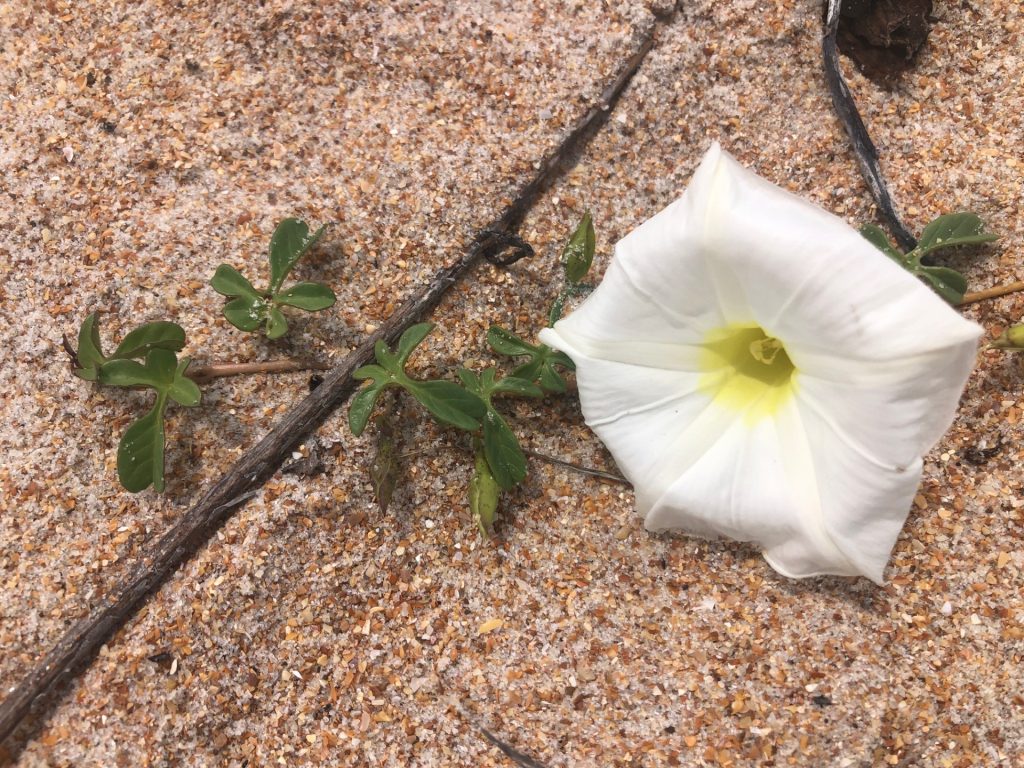
Beach morning glory (Ipomoea imperati) is related to the railroad vine and looks similar. However, the leaves are smaller, and they have white flowers. The name comes from the fact that (like the railroad vine), their flower only blooms for one day – so enjoy the morning glory of the blossom! Also like the railroad vine, the morning glory creates a groundcover and helps stabilize sand on the beach. Note that there is some variation in the shape of the leaves.
-
Beach sunflower

Also known as dune sunflower, beach sunflower (Helianthus debilis) is found throughout coastal areas of Florida, from the dunes to front yard gardens. This cheery, yellow-flowered plant is a spreading perennial that flowers year-round in frost-free areas and a self-seeding annual in frost-prone areas. It can also be identified by its alternating, triangular leaves.
-
Firewheel

Firewheel (Gaillardia pulchella) is also known by the name Indian blanket flower and has a red center that transitions to yellow at the petal tips. The flowers bloom from the spring through the fall and the plant has alternating, fuzzy leaves. You often find these plants on the backside of dunes, adding some color to our dunes!
-
Seacoast marsh elder
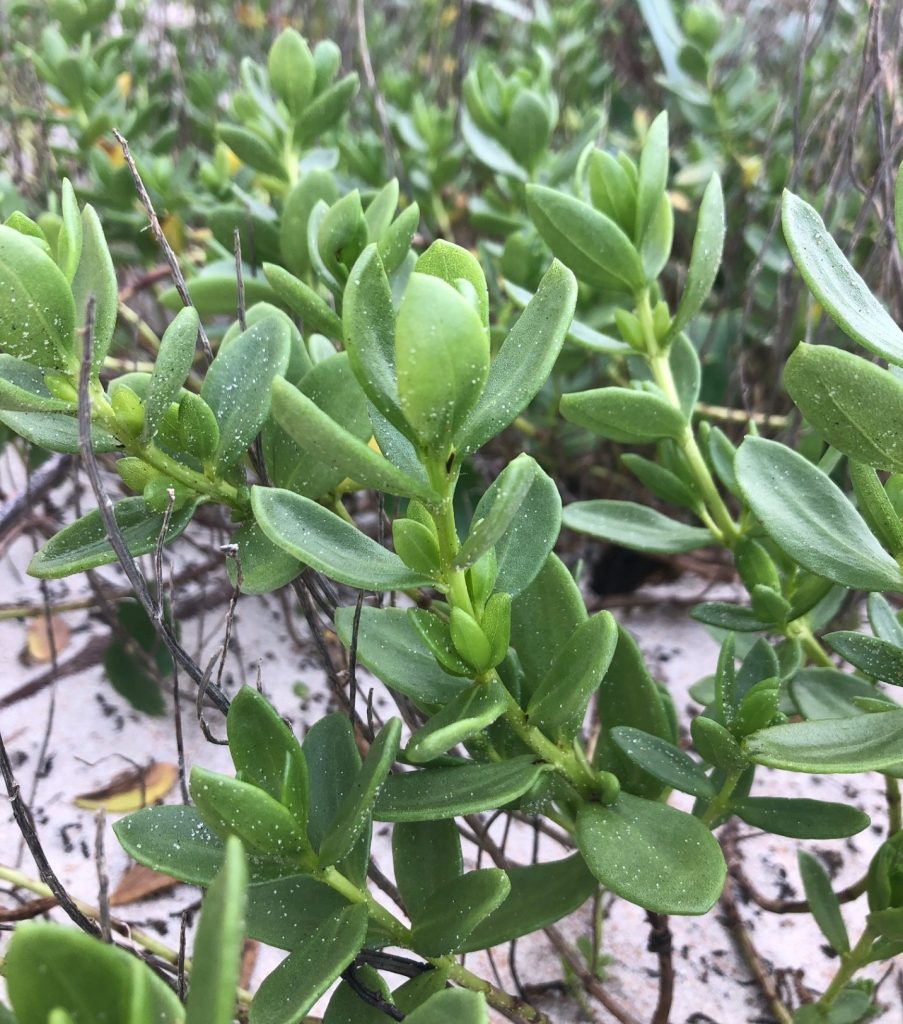
Seacoast marsh elder (Iva imbricata) is also known as beach elder. It is a succulent, with thick leaves adapted to store water. It remains low to the ground and traps blowing sand, helping the foredune grow.
-
Sea purslane

Sea purslane (Sesuvium portulacastrum) is another succulent with thick leaves, although the leaves are more linear in shape than the seacoast marsh elder. The stems are reddish in color, and they have small pink or lavender flowers. This plant is very tolerant of salt and captures sand between its leaves and stems.
Help protect our sand dune ecosystems!

When visiting the beach, use designated walkways and walkovers. Do not walk on or through the dunes, which can damage the dunes and kill plants. Even if you don’t see plants on the dunes, please remain on the lower, flat portion of the beach and do not walk or play on or along the edge of the dunes, which can cause erosion.
Next time you are at the beach, see if you can identify some of these plants in the dunes and appreciate their contribution to keeping our coasts beautiful and safe!
To learn more about dune plants:
There are many more species of plants that comprise our sand dune habitats than the species listed above, including saltmeadow cordgrass, seashore dropseed, beach croton, and sea rocket. If you would like to learn more about dune plants or dune restoration, some great resources include:
- Recommended Florida Native Beach and Dune Plants for Beachfront Properties and Dune Restoration
- Dune Restoration and Enhancement for the Florida Panhandle, and
- Native Plants for Coastal Dune Restoration
I have also uploaded my identification page for common dune plants of Florida (based off plants seen in Volusia and Flagler Counties) below. Feel free to print this out and take it with you the next time you visit the beach to work on your identification skills!
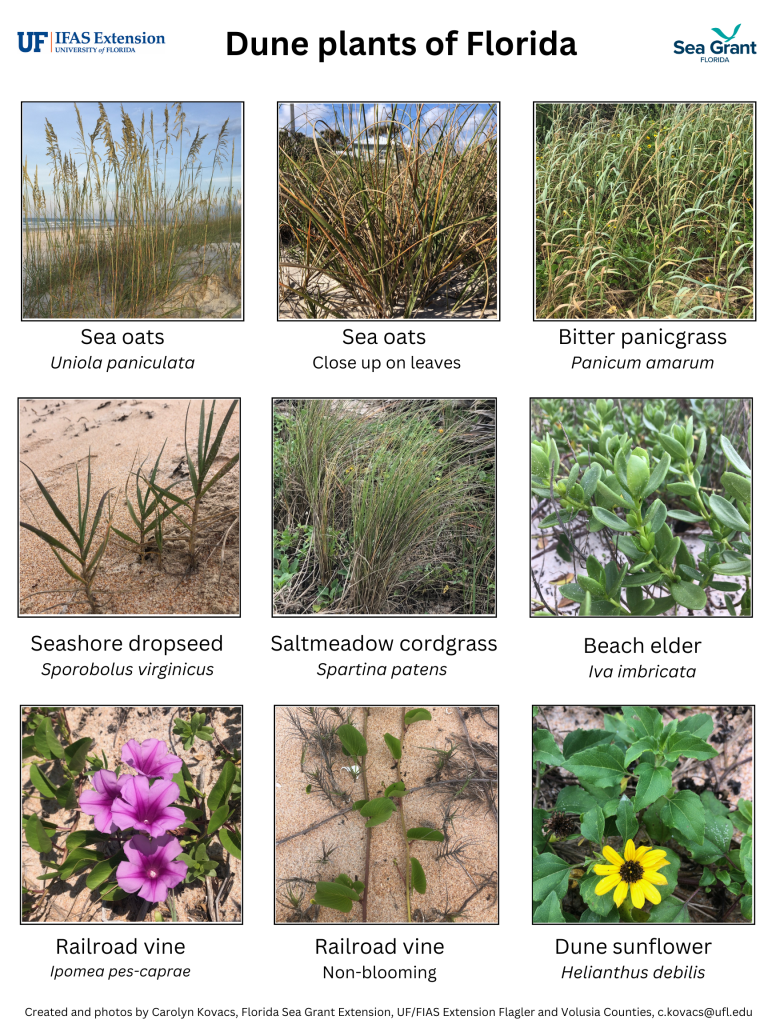
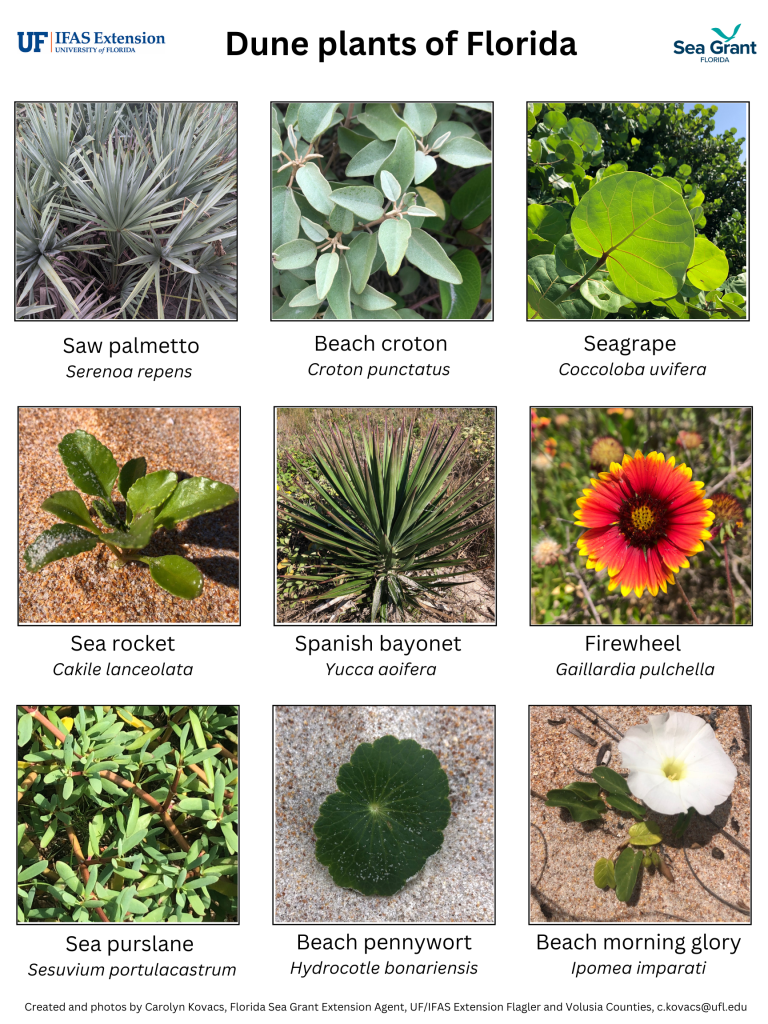
All photos in this blog were taken by Carolyn Kovacs, UF/IFAS Extension
 2
2
